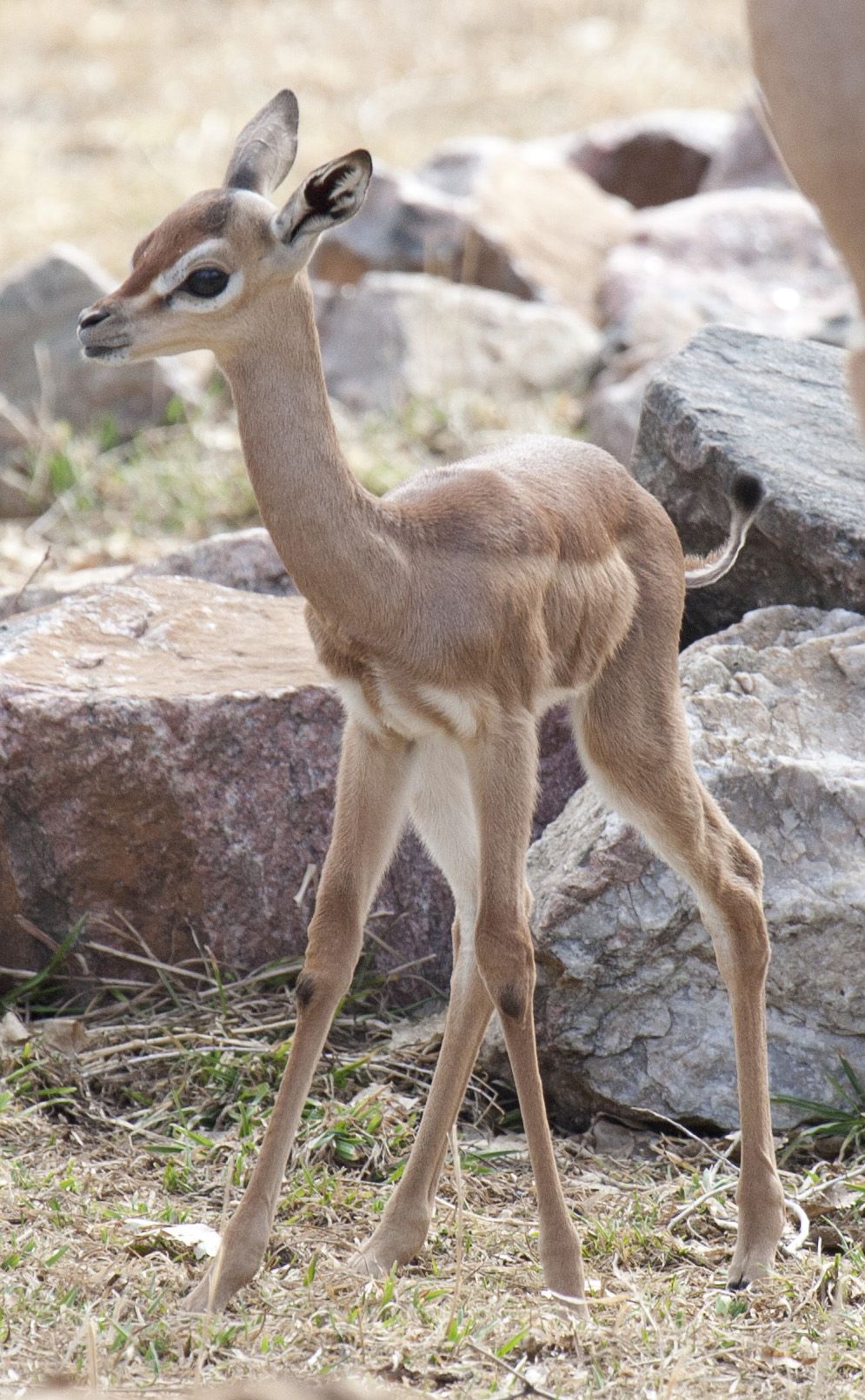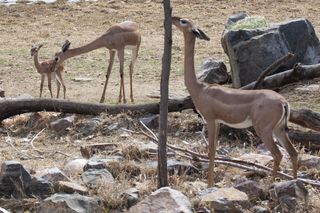Gangly Gerenuk Born at Denver Zoo

The Denver Zoo welcomed an adorable baby gerenuk named Blossom this month.
The shy, skinny antelope was born on March 6 to mother Layla and father Woody, and the family can now be seen in the zoo's gerenuk exhibit.
"Blossom has just begun venturing out into her yard and thoroughly enjoys it as she runs and jumps to the delight of her first visitors," zoo officials said in a statement. "Between bursts of speed, though, she likes to catch her breath in a cubby hole between some rocks. Blossom is also Layla's first calf and she is proving to be a very attentive mother, frequently making sure to clean and check on Blossom."
The word "gerenuk" appropriately means "giraffe-necked" in the Somali language. These long-necked creatures, which are native to eastern Africa, can weigh between 60 to 100 pounds (27 to 45 kilograms) and stand about 3.5 feet (1 meter) tall on four legs. But their uniquely designed hips and pelvises also allow these antelopes to stand up vertically on their two hind legs to reach leaves and twigs in trees.

Blossom is the first gerenuk born at the Denver Zoo. Her parents were paired through the Species Survival Plan of the Association of Zoos and Aquariums. The organization acts like a matchmaker, recommending which animals should mate to ensure that captive populations of endangered species remain healthy and genetically diverse.
There are thought to be about 95,000 gerenuks in the wild and the species is listed as near threatened by the International Union for Conservation of Nature (IUCN). These antelopes are world-class hiders, which means they can endure some pressures of hunting in their native home, but they are also threatened by habitat loss and fragmentation, according to the IUCN.
Follow us @livescience, Facebook & Google+. Original article on LiveScience.com
Sign up for the Live Science daily newsletter now
Get the world’s most fascinating discoveries delivered straight to your inbox.












